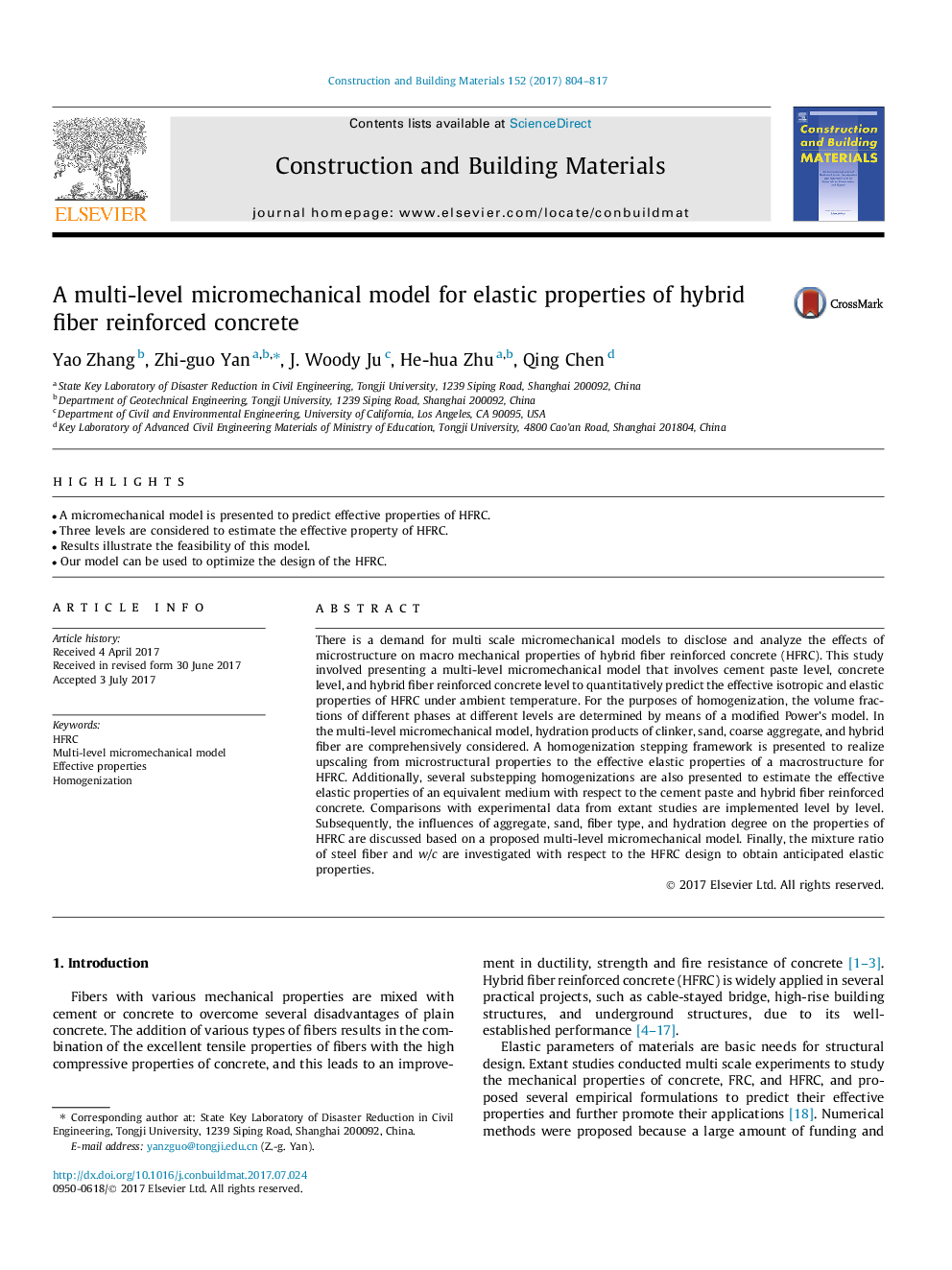| Article ID | Journal | Published Year | Pages | File Type |
|---|---|---|---|---|
| 4912812 | Construction and Building Materials | 2017 | 14 Pages |
Abstract
There is a demand for multi scale micromechanical models to disclose and analyze the effects of microstructure on macro mechanical properties of hybrid fiber reinforced concrete (HFRC). This study involved presenting a multi-level micromechanical model that involves cement paste level, concrete level, and hybrid fiber reinforced concrete level to quantitatively predict the effective isotropic and elastic properties of HFRC under ambient temperature. For the purposes of homogenization, the volume fractions of different phases at different levels are determined by means of a modified Power's model. In the multi-level micromechanical model, hydration products of clinker, sand, coarse aggregate, and hybrid fiber are comprehensively considered. A homogenization stepping framework is presented to realize upscaling from microstructural properties to the effective elastic properties of a macrostructure for HFRC. Additionally, several substepping homogenizations are also presented to estimate the effective elastic properties of an equivalent medium with respect to the cement paste and hybrid fiber reinforced concrete. Comparisons with experimental data from extant studies are implemented level by level. Subsequently, the influences of aggregate, sand, fiber type, and hydration degree on the properties of HFRC are discussed based on a proposed multi-level micromechanical model. Finally, the mixture ratio of steel fiber and w/c are investigated with respect to the HFRC design to obtain anticipated elastic properties.
Keywords
Related Topics
Physical Sciences and Engineering
Engineering
Civil and Structural Engineering
Authors
Yao Zhang, Zhi-guo Yan, J. Woody Ju, He-hua Zhu, Qing Chen,
